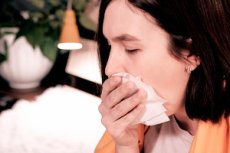New publications
What can the color of the sputum tell you?
Last reviewed: 29.06.2025

All iLive content is medically reviewed or fact checked to ensure as much factual accuracy as possible.
We have strict sourcing guidelines and only link to reputable media sites, academic research institutions and, whenever possible, medically peer reviewed studies. Note that the numbers in parentheses ([1], [2], etc.) are clickable links to these studies.
If you feel that any of our content is inaccurate, out-of-date, or otherwise questionable, please select it and press Ctrl + Enter.

The color shade of sputum in patients suffering from bronchiectasis indicates the extent of the inflammatory process and can help predict the outcome of the disease. The new work of researchers from the University of Dundee (UK) was presented during the international congress of the European Respiratory Society, which was held in early fall in Milan.
Bronchiectatic disease - a chronic pathology of the respiratory system, which is characterized by excessive accumulation of mucous secretions, bronchodilation and deformation, which is accompanied by frequent infection of the bronchi. Inflammatory processes constantly recur, pulmonary function is impaired.
One of the main symptoms of bronchiectasis is a wet cough, which in the vast majority of cases is accompanied by sputum discharge. With the addition of infection, the color of such secretions changes, which can be used as a biological marker of inflammatory reaction.
In their scientific work, British experts set out to clarify whether the color of sputum is associated with a possible change in the frequency or severity of recurrences, or with worsening lung function disorders. The scientists analyzed sputum from more than 13,000 patients from around the world who were identified in the European Bronchiectasis Registry (EMBARC). The patients were followed up for five years. The number of recurrences, complications, and patient deaths were evaluated.
Four types of sputum have been identified: mucous (clear or frothy, sometimes grayish), purulent-slimy (yellowish-creamy), purulent (yellowish-grayish or greenish, dense in structure) and purulent-rotten (deep green or brownish, sometimes with blood).
According to the results of the experiment, the experts found out that the increased risk of disease recurrence, complication development and death was observed in case of purulent or purulent-rotten sputum. The higher was the purulent nature of the discharge, the greater was the probability of the patient's death.
Scientists believe that the color range of sputum discharge demonstrates clinically and practically important indicators that reflect the most likely outcome of the disease, which allows timely adjustment of treatment and appropriate therapeutic measures. Sputum can be collected without much difficulty in almost all patients with bronchiectatic disease. This biomaterial is available, does not require additional devices and equipment, and at the same time helps to adequately assess the degree of progression of the problem.
To date, scientists are considering the possibility of introducing the color scale into medical practice. It is also possible to offer such a scale to patients themselves for self-monitoring of the course of the disease. This will make it possible to timely inform their physician about changes and take appropriate measures.
Information is available at
